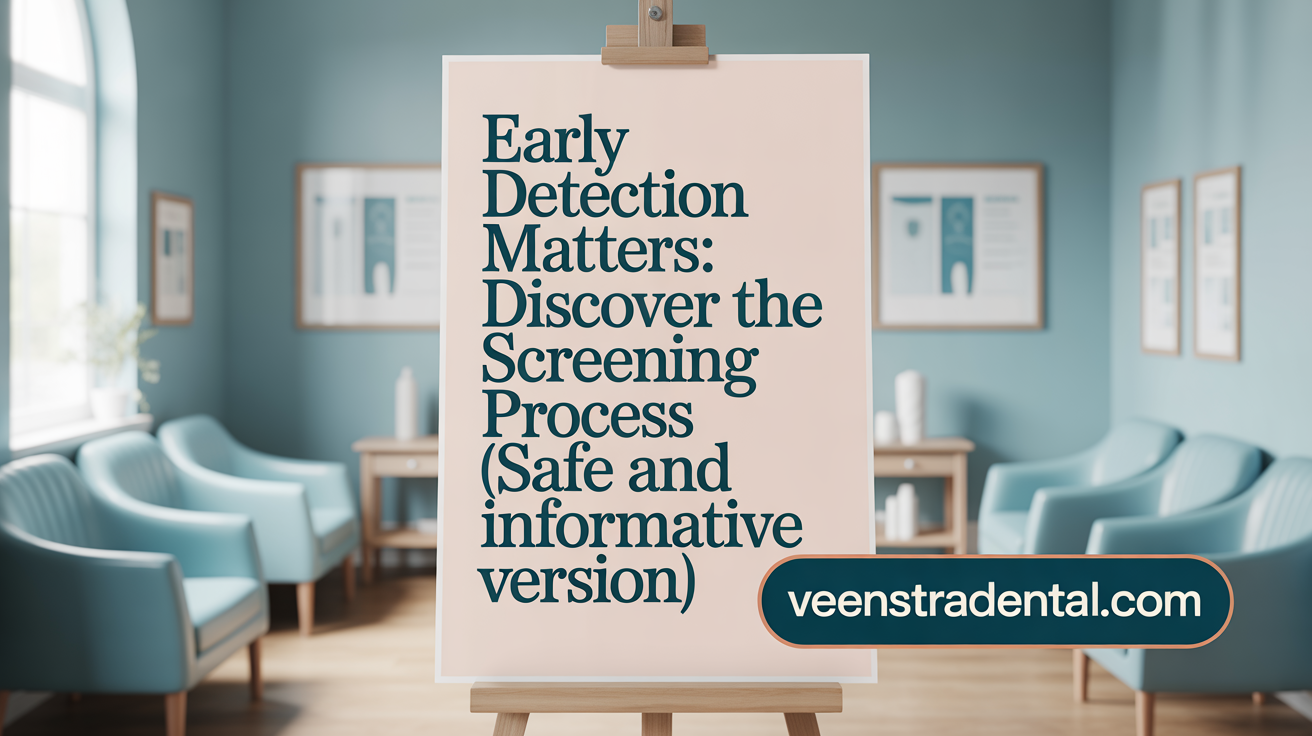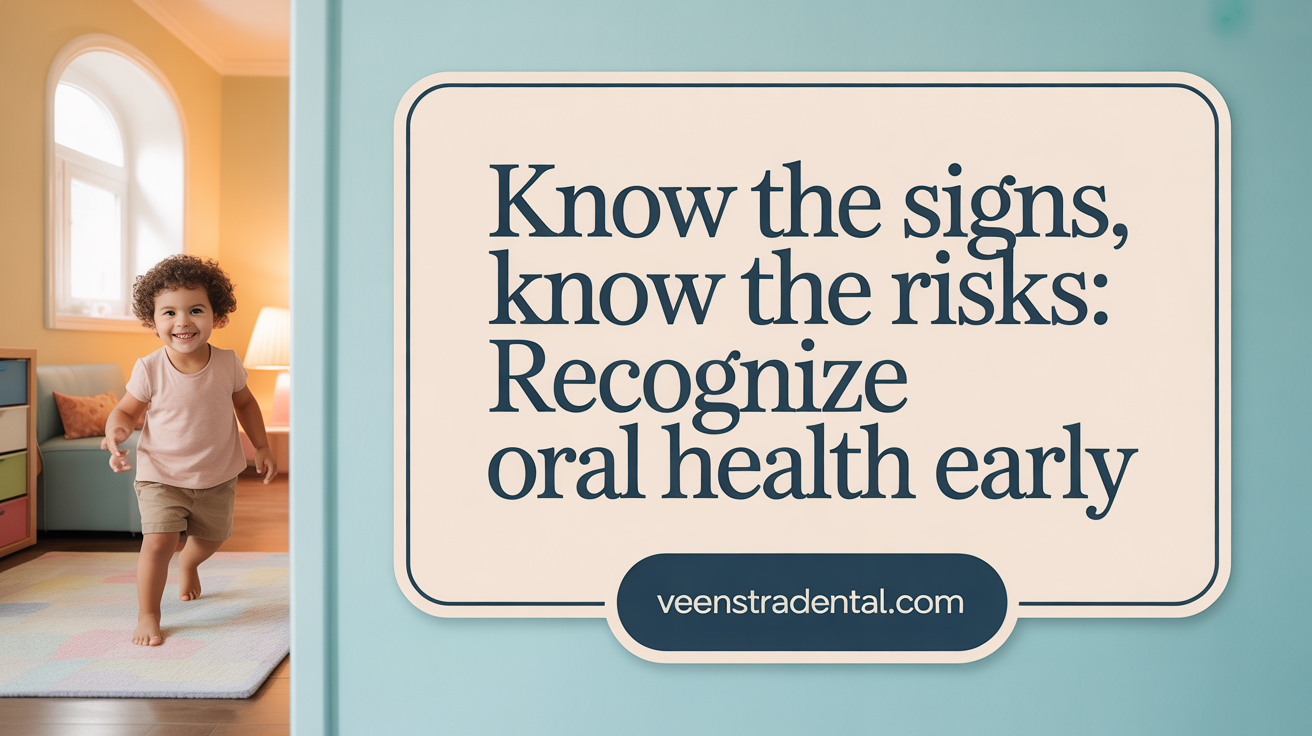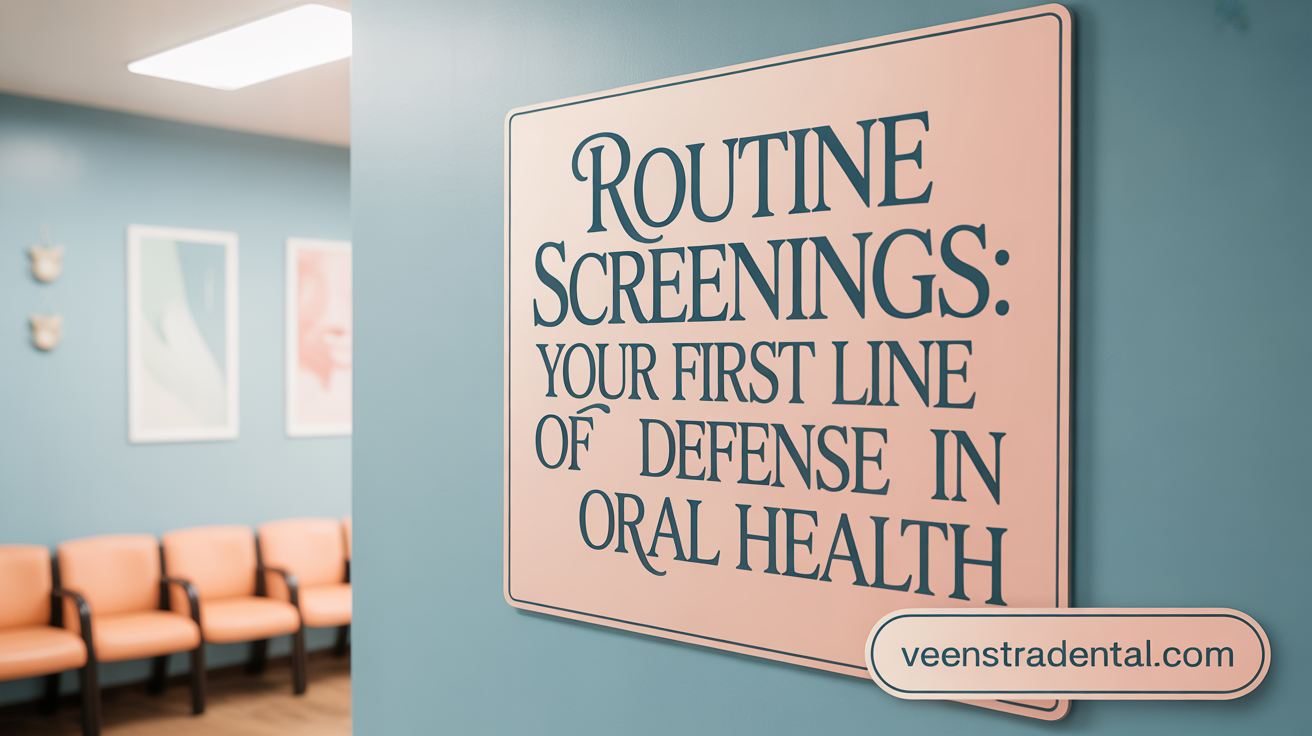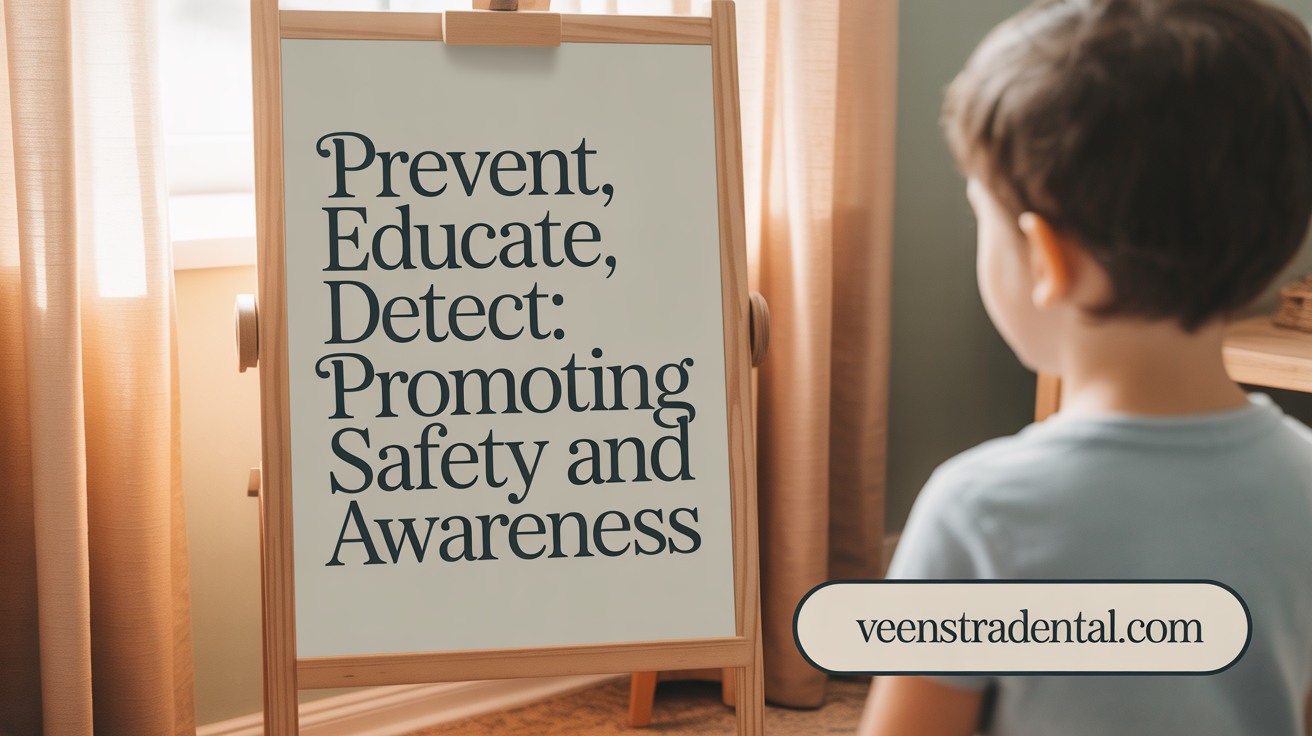Why Oral Cancer Screenings Matter
Oral cancer is a significant global health concern, often developing silently in its early stages with few noticeable symptoms. Understanding the importance of oral cancer screenings is critical for early detection, timely intervention, and improved treatment outcomes. Regular screenings not only help identify cancerous or precancerous lesions but also empower individuals to maintain their oral and overall health. This article explores the vital role of oral cancer screenings, the screening process, risk factors, prevention strategies, and current guidelines to safeguard your well-being through early protection.
The Crucial Role of Oral Cancer Screenings in Early Detection and Prevention

Why is oral cancer screening important?
Oral cancer screening is vital because it enables early detection of potential problems, often before symptoms appear. During routine check-ups, dentists examine the mouth, lips, tongue, and throat for any abnormalities such as persistent sores, lumps, red or white patches, or tissue discoloration. Detecting these signs early increases the chances of successful treatment and improves survival rates.
Many oral cancers develop silently in their initial stages, making professional screening essential. If suspicious areas are identified, further tests like biopsies can be conducted promptly. While there is no conclusive evidence that routine screenings directly reduce the risk of death, they are highly effective for high-risk groups—including individuals who use tobacco, consume alcohol heavily, or are infected with HPV.
By routinely checking for early signs, healthcare professionals can initiate early interventions, often less invasive and more effective. Regular screenings thus play a critical role in maintaining oral health and overall well-being, helping prevent the progression of potentially life-threatening cancers.
Understanding the Oral Cancer Screening Process and Its Role in Early Diagnosis

What does the oral cancer screening process involve and how does it aid early diagnosis?
Oral cancer screening is a vital part of dental check-ups aimed at detecting early signs of mouth cancer. The process primarily features a comprehensive visual and tactile examination performed by a trained dentist or healthcare provider. During this routine, the professional inspects the lips, mouth, tongue, cheeks, and throat for abnormalities such as sores, lumps, discolored patches, or lesions. These findings could indicate precancerous conditions like leukoplakia or erythroplakia, which warrant further investigation.
In addition to visual inspection, advanced techniques are used in some cases to improve detection accuracy. These include applying special dyes like toluidine blue, fluorescence-based lights such as VELscope, and conducting exfoliative cytology or brush biopsies. These methods help highlight suspicious tissue that might not be visually apparent, providing additional information about potential malignancies.
While routine screenings for oral or nasopharyngeal cancers are not universally recommended or proven to reduce mortality directly, targeted examinations are crucial for early detection. They are especially beneficial for high-risk groups, including tobacco users, heavy alcohol consumers, and individuals infected with HPV.
Overall, these examinations are noninvasive, quick, and patient-friendly. Their main goal is to catch early, often asymptomatic, lesions before they develop into invasive cancer. Detecting abnormalities early significantly increases the chances of successful treatment and improves prognosis.
However, it’s important to acknowledge that the efficacy of some screening tools remains under ongoing research. False positives and overdiagnosis are potential risks, emphasizing the need for careful interpretation of findings. Despite these challenges, regular oral cancer screenings continue to be a cornerstone in preventive dental care, playing a critical role in early diagnosis and better health outcomes.
Key Risk Factors, Symptoms, and Signs of Oral Cancer to Recognize Early

What are the key risk factors, symptoms, and signs related to oral cancer that individuals should be aware of?
Understanding the risk factors and early signs of oral cancer is essential for timely detection and effective treatment. Major risk factors include tobacco use, such as smoking cigarettes or using smokeless tobacco, and heavy alcohol consumption. Infection with the human papillomavirus (HPV) and prolonged exposure to sunlight can also increase the risk, especially for cancers on the lips.
Other contributing factors include age—most cases are diagnosed in people over 45—male gender, poor oral hygiene, and a history of head and neck cancers. Lifestyle choices like a diet low in fruits and vegetables, chronic irritation from sharp teeth or dental appliances, and a family history of cancer further elevate risk.
Recognizing symptoms and signs early can greatly improve treatment outcomes. Common indicators include persistent sores in the mouth that do not heal, lumps or thickened areas on the gums, tongue, or inside of the cheeks, and difficulty chewing or swallowing. Unexplained bleeding, numbness or loss of feeling in the mouth, white or red patches, and sores that bleed easily are warning signs to watch for.
Practicing preventive measures such as quitting tobacco, reducing alcohol intake, and protecting lips from the sun with SPF can significantly lower the risk.
Early detection through routine screenings and prompt medical attention when symptoms are noticed are vital. This proactive approach can lead to less invasive treatment options and higher survival rates.
Being aware of these risk factors and signs allows individuals to seek appropriate dental or medical evaluations promptly, which is crucial for catching oral cancer early and improving prognosis.
More info
Search Query: Oral cancer risk factors and early symptoms
This awareness can ultimately save lives by enabling early intervention and maintaining overall health.
The Vital Importance of Routine Oral Cancer Screenings for Maintaining Oral Health

Why are routine oral cancer screenings important for maintaining oral health?
Regular oral cancer screenings are a crucial part of overall dental health because they help detect early signs of mouth cancer that often develop without symptoms. During a screening, a dentist visually inspects the mouth, including the lips, tongue, gums, throat, and neck for unusual patches, sores, lumps, or discolorations.
Early detection is vital because oral cancer can be treated successfully when caught in its initial stages, significantly improving survival rates. For example, the five-year survival rate for early-stage oral cancer is approximately 85%, compared to only 39% for late-stage diagnosis.
Screenings also allow dental professionals to identify precancerous conditions or risk factors such as tobacco use, heavy alcohol consumption, or HPV infection. This enables patients to receive advice on lifestyle changes and preventive measures, including quitting tobacco, moderating alcohol intake, and practicing good oral hygiene.
Furthermore, routine screenings during dental check-ups can catch signs of oral cancer before symptoms appear, often when the disease is easier and less invasive to treat. This proactive approach not only improves cure rates but also reduces healthcare costs and preserves oral functions.
Because oral cancer can develop silently, especially among high-risk groups such as older males, regular visits to a trusted dentist ensure continuous health monitoring. Early detection through screenings plays a pivotal role in maintaining oral health and overall well-being.
How do screenings fit into regular dental visits?
It is generally recommended to have a dental check-up and oral cancer screening at least twice a year. During these visits, dentists perform visual and tactile examinations, sometimes utilizing advanced tools like special lights or dyes to highlight abnormal tissues.
These routine exams are quick, patient-friendly, and serve as an effective safeguard against late diagnoses. If any suspicious findings are identified, further tests such as biopsies can be performed promptly.
Many organizations, including the American Dental Association and the American Cancer Society, endorse integrating oral cancer screenings into standard dental care. This ensures no opportunity is missed to detect early signs of mouth cancer, especially in individuals at higher risk.
Patient education and lifestyle advice
Dentists also use screenings as occasions to educate patients about risk factors and preventive strategies. Patients are advised to avoid tobacco and excessive alcohol, protect their lips from sun exposure, maintain a balanced diet rich in fruits and vegetables, and perform self-examinations regularly.
People are encouraged to ask questions about their oral health and any unusual symptoms they notice between visits, such as persistent sores or changes in speech or swallowing. These proactive measures can make a significant difference in early detection and successful treatment.
Impact on treatment and prognosis
Detecting oral cancer early greatly influences treatment options and outcomes. When diagnosed at an early stage, treatments tend to be less invasive, more effective, and associated with higher survival rates.
Early intervention not only enhances prognosis but also helps preserve oral functions, maintain appearance, and improve quality of life. It reduces the need for extensive surgery or combined therapies, leading to fewer complications and better recovery.
Regular screenings can therefore be seen as a vital health investment, saving lives and reducing the personal and societal burden of advanced oral cancer.
Education, Prevention, and Current Guidelines: Enhancing Oral Cancer Screening Outcomes

How can education on oral cancer prevention and regular screenings improve health outcomes?
Educating the public about oral cancer prevention and the importance of routine screenings plays a vital role in reducing disease prevalence and improving survival rates. Awareness campaigns highlight risk factors such as tobacco use, excessive alcohol consumption, and HPV infection, encouraging individuals to adopt healthier behaviors. When people understand the benefits of early detection, they are more likely to seek regular dental check-ups, where screenings can identify abnormal changes before symptoms appear.
These early detections—achieved through simple visual examinations—can lead to less invasive treatments and higher chances of cure. Additionally, education about vaccination and lifestyle modifications not only lowers risk but also empowers individuals to take charge of their oral health. Implementing targeted educational programs for high-risk populations, coupled with risk assessments, enables more personalized prevention strategies, ultimately decreasing the incidence and mortality associated with oral cancer.
What are the current guidelines and recommendations for oral cancer screening practices?
Healthcare professionals recommend that adults have an oral cancer screening at least once every year during routine dental visits. For those with higher risk factors—such as tobacco users, heavy drinkers, or individuals with HPV—the frequency of screenings may be increased, based on individual risk profiles.
The screening process is primarily visual and tactile, performed by trained dental or medical practitioners. They examine the lips, mouth, tongue, cheeks, and throat for signs like sores, lumps, white or red patches, or discolorations. While no universally accepted screening test exists, emerging technologies like brush biopsies, advanced lights, and molecular diagnostics show promise but are not yet standard practice.
Overall, current guidelines emphasize the importance of personalized screening strategies that combine routine examinations with risk awareness. Combined with patient education and technological advancements, these practices aim to detect oral cancers early, when treatment is most effective, thus improving prognosis and saving lives.
Search query: Oral cancer prevention education and screening guidelines
Taking Action: Prioritizing Oral Cancer Screenings for Lifelong Health
Oral cancer screenings are an essential preventive tool that contributes profoundly to early detection, better treatment outcomes, and overall health protection. Understanding the risk factors, symptoms, and the screening process empowers individuals to take proactive steps toward safeguarding their oral and general well-being. Routine screenings integrated into regular dental care, coupled with education on lifestyle modifications and prevention, offer the best defense against this potentially life-threatening disease. By prioritizing oral cancer screenings, you invest not only in preserving your smile but also in enhancing your quality of life and long-term survival.
References
- Understanding the Importance of Oral Cancer Screenings
- How Oral Cancer Screenings Save Lives: Understanding Early ...
- The Power Of Oral Cancer Screening: Early Detection Matters
- Early Detection Saves Lives: Understanding Oral Cancer Screening
- Oral Cancer - Protection And Early Detection: A Comprehensive Guide
- The Importance of Regular Oral Cancer Screenings - Pecan St. Dental
- Oral Cancer Screenings: What You Need to Know
- The Importance of Oral Cancer Screenings in Early Detection
- Oral Cancer Screening: Past, Present, and Future - PMC
- Oral cancer screening - Mayo Clinic
